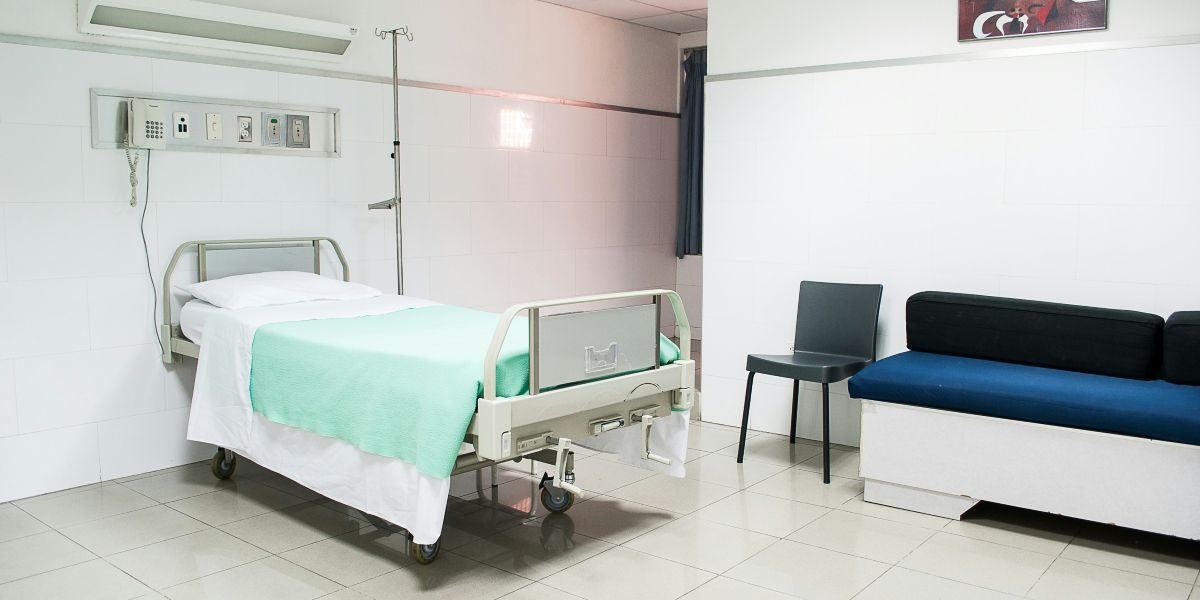Hospital operating rooms face a financial paradox. They generate enormous amounts of waste while budgets grow tighter each year. The average surgery produces up to 10 pounds of trash, and disposing of it costs hospitals millions annually. Most facilities treat this expense as unavoidable, but the reality is different. Strategic waste reduction delivers substantial savings without compromising patient safety or care quality. Smart management of medical surgical supplies combined with efficient disposal practices can cut costs dramatically. This article breaks down proven strategies that help hospitals reduce waste expenses while improving their bottom line and environmental impact.
The True Cost of Operating Room Waste
Operating rooms create more waste than any other hospital department. This waste carries hidden costs that extend far beyond the obvious disposal fees.
Breaking down the actual expenses:
- Biohazard waste disposal costs five to ten times more than regular trash
- Staff time spent handling and sorting waste adds labor costs
- Storage space for waste containers takes up valuable real estate
- Transportation fees for waste removal keep rising
- Regulatory compliance and documentation require administrative resources
A single operating room can generate $1,500 to $3,000 in waste disposal costs per month. Multiply that across all surgical suites, and the annual expense becomes staggering.
Many hospitals waste money by treating clean materials as biohazard waste. This single mistake can double or triple disposal costs unnecessarily.
Why Hospitals Overspend on Surgical Supplies?
Supply waste starts long before items hit the trash bin. Poor purchasing decisions create a cascade of unnecessary expenses.
Common supply management problems include:
- Ordering more than needed due to fear of shortages
- Buying items that expire before use
- Stocking duplicate products that serve the same purpose
- Opening sterile packages that never get used during surgery
One study found that up to 30% of opened surgical supplies get thrown away unused. That means hospitals literally throw money in the trash with every procedure.
Standardized surgical kits often contain items that specific surgeons never use. Custom-building these kits to match actual needs prevents waste while cutting costs.
How Proper Waste Segregation Saves Money Fast?
Most hospitals can cut disposal costs by 30-50% through better waste sorting. The key is training staff to distinguish between true medical waste and regular trash.
Understanding Waste Categories: Only materials contaminated with blood or infectious fluids require expensive biohazard disposal. Clean packaging, paper, and uncontaminated plastics can go into regular trash or recycling.
The Red Bag Problem: Many operating rooms default to throwing everything into red biohazard bags. This expensive habit stems from confusion about regulations and fear of making mistakes.
Simple Sorting Solutions: Color-coded bins with clear labels and pictures help staff sort correctly. Place bins strategically where waste gets generated to make proper disposal the easy choice.
One hospital saved $300,000 annually just by training staff to segregate waste properly. The investment in education paid for itself within weeks.
Reusable Items Cut Costs Over Time
Switching from disposable to reusable products requires upfront investment but delivers long-term savings. The math strongly favors reusables for many applications.
Cost Comparison Example: A disposable surgical gown costs $3-5 and gets used once. A reusable gown costs $30 but withstands 75-100 launderings. Over its lifetime, the reusable gown costs pennies per use.
Items Worth Switching: Hospitals see the biggest returns when replacing these disposables:
- Surgical gowns and drapes
- Patient warming blankets
- Hard plastic containers for sterile instruments
- Surgical towels and linens
The environmental benefits come as a bonus alongside financial savings. Less waste means lower disposal fees and reduced purchasing costs.
Modern sterilization technology makes reusables as safe as disposables. Concerns about infection risk are outdated when proper protocols are followed.
Device Reprocessing Programs Deliver Major Savings
Single-use medical devices cost hospitals billions annually. Many of these items can be safely cleaned, sterilized, and reused through FDA-regulated reprocessing programs.
Third-party reprocessing companies handle the entire process. They pick up used devices, clean them to FDA standards, repackage them, and return them ready for use.
Financial Impact: Reprocessed devices cost 40-60% less than buying new ones. A hospital performing 100 surgeries monthly can save $50,000 to $100,000 per year through reprocessing.
Commonly Reprocessed Items
- Surgical staplers and cutting devices
- Electrophysiology catheters
- Compression sleeves
- Pulse oximetry sensors
Safety data shows reprocessed devices perform identically to new ones. Thousands of hospitals now use reprocessing programs without any increase in complications.
The savings scale with volume. Larger hospitals see bigger returns, but even small facilities benefit financially.
Supply Chain Optimization Prevents Waste
Better inventory management stops waste before it starts. Modern supply chain strategies reduce expired products, overstocking, and emergency orders.
Just-in-Time Ordering: Ordering supplies closer to when you need them prevents expiration waste. Digital inventory systems track usage patterns and predict needs accurately.
Par Level Adjustment: Many hospitals maintain unnecessarily high inventory levels. Analyzing actual usage data reveals opportunities to reduce stock without risking shortages.
Vendor Partnerships: Some suppliers offer consignment programs where hospitals only pay for items they use. This eliminates waste from expired inventory while improving cash flow.
Group Purchasing: Joining group purchasing organizations provides better pricing and reduces minimum order quantities. Smaller hospitals especially benefit from these arrangements.
Supply chain improvements deliver quick wins. Most hospitals find waste reduction opportunities within their first inventory audit.
Recycling Programs Turn Waste Into Revenue
Many materials hospitals throw away have value. Recycling programs recover costs while reducing landfill waste.
Blue Wrap Recycling: The sterile blue plastic wrapping around surgical instruments is highly recyclable. Specialized companies pay hospitals for this material or provide free waste collection in exchange for the plastic.
Metal Recovery: Stainless steel instruments, equipment parts, and packaging materials contain valuable metals. Scrap metal recycling generates revenue while keeping materials out of landfills.
Cardboard and Paper: Operating rooms receive tons of cardboard packaging. Setting up cardboard recycling diverts significant waste volume at minimal cost.
Some hospitals have turned recycling into a profit center. The revenue rarely covers all disposal costs but helps offset expenses while supporting sustainability goals.
Training Staff Reduces Expensive Mistakes
Human error drives many waste-related costs. Comprehensive training helps staff make better decisions that save money.
Key Training Topics
- How to identify different waste types correctly
- When to open sterile packages versus keeping them sealed
- Proper techniques for waste segregation
- Understanding the cost impact of waste decisions
Making Training Stick: Short refresher courses work better than one-time annual sessions. Visual reminders near waste bins reinforce correct behaviors. Sharing cost savings data motivates staff by showing their impact.
Champions Program: Identifying sustainability champions within each surgical team spreads best practices organically. Peer-to-peer education often works better than top-down mandates.
Facilities that invest in training see measurable waste reduction within months. The return on investment is clear and quick.
Tracking Data Reveals Savings Opportunities
You cannot improve what you do not measure. Waste audits and ongoing tracking identify where money gets wasted.
Simple Metrics to Monitor
- Total waste volume per procedure type
- Percentage of waste properly segregated
- Cost per pound of waste disposal
- Supply expiration rates
Conducting Waste Audits: Sort through operating room trash for one week to see what you actually throw away. Most hospitals discover that 50-70% of waste is not truly hazardous.
Dashboard Reporting: Monthly reports showing waste reduction progress and cost savings keep teams engaged. Celebrate wins and address problem areas quickly.
Data-driven decisions outperform guesswork every time. Hospitals that track metrics consistently outperform those that rely on assumptions.
Negotiating Better Waste Disposal Contracts
Waste haulers compete for hospital business. Hospitals with multiple contracts should regularly seek competitive bids.
Contract Review Checklist:
- Compare per-pound disposal rates across vendors
- Examine pickup frequency requirements
- Review any minimum volume commitments
- Check for hidden fees and surcharges
Volume-Based Savings: As waste volume decreases through reduction efforts, renegotiate contracts to reflect lower service needs. Some hospitals cut disposal contracts by 40% after implementing waste reduction programs.
Service Bundling: Consolidating multiple waste streams with one vendor sometimes yields better overall pricing. However, compare bundled versus separate contracts to ensure savings.
The waste disposal market allows negotiation. Hospitals often accept initial quotes without shopping around, leaving money on the table.
Technology Solutions for Waste Management
New technologies help hospitals track waste, improve efficiency, and reduce costs through automation and better data.
RFID Tracking Systems: Radio frequency tags on waste containers provide real-time data about waste generation by location and time. This granular information reveals specific improvement opportunities.
Automated Sorting: Some facilities use sensor-based systems that help staff sort waste correctly at the point of generation. These systems reduce sorting errors that lead to costly misclassification.
Inventory Management Software: Modern systems track supply usage patterns, predict needs, and alert staff before items expire. This prevents waste from overstocking and expiration.
Technology requires upfront investment but often pays for itself through waste reduction and labor savings within one to two years.
Conclusion
Reducing surgical waste cuts costs significantly while benefiting the environment. Hospitals can achieve substantial savings through proper waste segregation, smart supply management, embracing reusable items, and implementing device reprocessing programs. Better staff training prevents expensive mistakes, while data tracking reveals hidden opportunities for improvement. The financial case for waste reduction grows stronger as disposal costs continue rising.
Every dollar saved on waste management can redirect toward patient care and essential services. Hospitals that take action on these strategies typically see returns within months rather than years. The path to lower costs and less waste requires commitment but delivers measurable results that improve both financial performance and environmental stewardship across healthcare facilities.

















